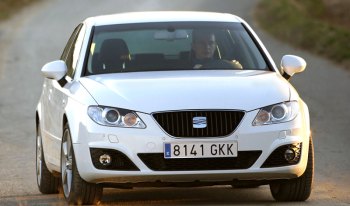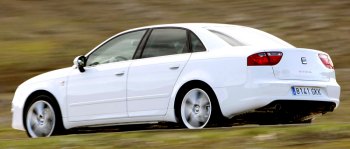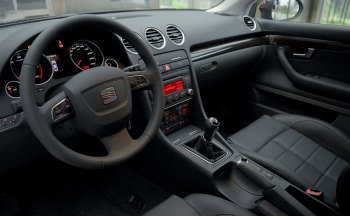|

|
Old Audi was resurrected from grave
and given a new badge...
|
Scanning
through the sales
figures in our updated manufacturer pages, you will find Volkswagen
group is in the rise. All its brands, no matter Volkswagen, Audi,
Skoda, Bentley, Lamborghini or even Bugatti, recorded sales rise in the
past few years. The only exception was SEAT. The Spanish subsidiary saw
its sales slid from 460,000 units in 2003 to 411,000 units in 2007,
even though the overall market was growing during the same period. SEAT
is facing a lot of challenges in the market place. At the lower end,
its B and C-segment small cars are facing unprecedented competition
from the Far East as well as existing European rivals. At the upper
end, it
lacks a big family car to sell in D-segment.
Developing a D-segment car is costly, because it requires much higher
technology and quality than small cars. Even though part of the cost
can be shared through platform strategy, it could present a risk too
high to the struggling Spanish company. Fortunately, SEAT found a
cheaper solution – remember the last generation Audi A4 (2001-07) ?
When it retired a couple of years ago, it was still a handsome,
high-quality and sophisticated junior executive car. Even today it
remains largely competitive against mainstream family cars. Instead of
wasting such a good material, SEAT resurrected it from the grave,
transferred its production toolings to Spain and re-engineered it into
its very own Exeo.

|
70 percent components are shared with
old A4. The remaining is largely down to new engines...
|
Externally, the Exeo looks exactly as
a badge-engineered
version of old A4, especially its side view and rear view. Only the
nose gets its own design, yet this is partly driven by the new
pedestrian safety law that the old car was not subjected to.
Nevertheless, to look like an Audi is by no means a disadvantage. On
the contrary, it may help Exeo to get credibility from consumers,
easing their worry about build quality.
Open the doors, you will find the interior also comes from Audi – this
time A4 Cabriolet. Its elegant dashboard with 5 chromed circular vents,
expensive plastic (except the hard one at lower dash) and solid
switchgears is the best yet appeared in a SEAT. On the down side, it
shares with the old Audi a cramped rear seat which is short of legroom
and shoulder room to rival its larger competitors, such as Ford Mondeo
or Skoda Superb.
Exeo shares about 70 percent components with the old A4. The remaining
30 percent new parts are largely down to the two new engines – 143hp
2.0TDI common-rail direct-injection turbo diesel and 200hp 2.0TSI
direct-injection turbo petrol. As you already know from other
Volkswagen group cars, both are remarkable powertrains no matter in
terms of punch or refinement. Not so great are the two older engines –
the long-serving 150hp 1.8-liter 20V turbo and 102hp 1.6-liter 8V,
which are budget choices.

|
The interior also comes from Audi –
this time A4 Cabriolet.
|
Apart from new engines, Exeo also
improved on the A4
chassis. The old car used to pitch a lot over undulations or under
braking due to its nose heaviness – remember, it had its engine
installed longitudinally before the front axle. Exeo cannot escape from
the same inherent weakness, of course, but it tried to address the
problem with Sport suspension. The firmer setup tightens its body
control noticeably, but sadly it leads to a harsh ride on less than
smooth roads. Cars in standard suspension behave on the contrary –
better ride and poorer handling. When it comes to chassis dynamics, it
can’t worry Ford Mondeo or Mazda 6.
In many ways, you can see SEAT Exeo as a polished version of the old
Audi A4 – better engines and better handling in particular. You can
also see it as a cut-price Audi. However, the world is progressing
rapidly these days. Yesterday’s Audi is only today’s Hyundai. I doubt
if Exeo could turnaround the fortune of SEAT. For sure, more has to be
done. |